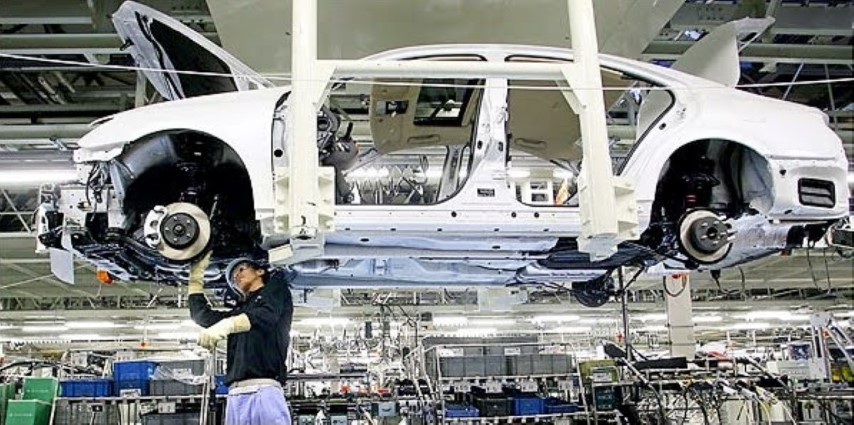What really makes a great car
- Written by
- Published in News
- font size decrease font size increase font size
- Be the first to comment!

There are many things that influence our decisions on what vehicle we ought to buy. Perhaps it’s the vibrant colours and perfect lighting on automobile brochures. Maybe the slow motion special effects found in website videos that best display a new vehicle design feature. Looking beyond marketing fluff, many consumers are drawn to the reviews by experienced automotive journalists.
Automotive Journalists are initially attractive options as they share their “expert opinions” and details about a particular vehicle in their reviews that a consumer might not know. Their reviews might help consumers determine whether that vehicle is best suited for them and their lifestyle. Other times you might come across reviews in which the opinions and views expressed about the vehicles are based mainly on key performance numbers and how it runs on a high speed track. An exhilarating description of pushing the car to its limits can potentially be what reviewers and journalists determine to be a great car. Unfortunately, what’s often overlooked are the basics of a great car – manufactured quality, economy and cost of living, as well as the handling and comfort of daily driving. This begs the question, what really makes a great car?

This question can be answered in a variety of ways, but in my opinion, the first thing that should be looked at is the manufacturing quality. It’s the first thing you see and it’s the first thing that catches your eye. If you discover a flaw, it’s like an itch that won’t go away. Quality and precision are integral to getting great consumer ratings – it’s what drives people to invest in vehicles again and again. Sadly, consumers aren’t focused on these key facts, because they’re bombarded with vehicle numbers, such as how the engine is built and how fast it can go. Vehicle numbers are flashy and exciting, but manufacturers can always construct a quick car with minimal quality placed in the actual mechanics of the vehicle. Paying more money for faster, sexier looking cars at the further cost of expensive parts and maintenance are not qualities of a great car. Speed means nothing when the vehicle breaks down on a constant basis and end up costing you more in the long run.
Quality of parts and the effort put into the manufacturing of the vehicle must be the paramount focus on what makes a great car. In turn, you will receive improved reliability that will add real value if you end up selling it down the road and that’s what truly determines a great car. Many consumers pay more for automotive parts, because they’re more durable and last longer. It’s essential to do some research and find out about parts quality and what are the best parts for your vehicle. With a little research, you can instantly possess the knowledge and insight to spot flaws in certain vehicles and be more comfortable with your decision while negotiating at the dealership.

Another major factor that reviews and commercials often look past are the costs to sustain these powerful motors throughout the year. Consumers receive no future insight into the operating costs to maintain the vehicle and minimal information on gas prices. These operating costs end up being the real cost of a vehicle and not just the final selling price. Fuel economy and the cost of fuel per month must be researched beforehand. A great website to visit is http://torontogasprices.com/TripCalculator.aspx to calculate the cost of fuel per trip and gas mileage of your vehicle at the current gas prices across Canada and the United States.
I should point out that there are various reasons to buying a car. The focus of this article is not towards those individuals who are looking for a sporty third car that they can play with, but towards consumers who are looking for a vehicle that’s safe, attractive, affordable to purchase, economical to operate and can last them many winters – a worthwhile purchase in the end. It’s not easy to find a vehicle with all of those attributes, but the place to start is by looking at the longevity of a vehicle. Checking reviews from previous years are vital to see whether certain parts have held up or were required to be replaced.
 Handling and comfort is also vital when test driving your potential new vehicle. A skillful test driver on a high speed track will say it handles with some understeer or oversteer through the corners going 190 km/h. Those comments pay little attention to the actual comfort and atmosphere of the cabin on your everyday commute. What you need to look for are the parts of the review off the track in an everyday life setting. The exhilarating thrill of pushing a car to its limits does not make it a great car. The handling must be smooth and not performance-based. The cabin must be comforting and soothing, not made for the rough, agile lifestyles of race car drivers who must win at all costs. The goal is to overlook the smiles and thrilling screams of the commercials and track reviews and pay close attention when test driving a vehicle. You should feel comfortable sitting upright or slouching as you would after a long day. The handling shouldn’t differ on a rainy or snowy day. Test drive the car over bumpy and gravel filled roads and see if the vehicle loses control easily or if the suspension and quick response of the handling overcomes these obstacles. A vehicle might have great handling on a flat racetrack, but when taken to the practical streets of a city – does the verdict of the vehicle differ?
Handling and comfort is also vital when test driving your potential new vehicle. A skillful test driver on a high speed track will say it handles with some understeer or oversteer through the corners going 190 km/h. Those comments pay little attention to the actual comfort and atmosphere of the cabin on your everyday commute. What you need to look for are the parts of the review off the track in an everyday life setting. The exhilarating thrill of pushing a car to its limits does not make it a great car. The handling must be smooth and not performance-based. The cabin must be comforting and soothing, not made for the rough, agile lifestyles of race car drivers who must win at all costs. The goal is to overlook the smiles and thrilling screams of the commercials and track reviews and pay close attention when test driving a vehicle. You should feel comfortable sitting upright or slouching as you would after a long day. The handling shouldn’t differ on a rainy or snowy day. Test drive the car over bumpy and gravel filled roads and see if the vehicle loses control easily or if the suspension and quick response of the handling overcomes these obstacles. A vehicle might have great handling on a flat racetrack, but when taken to the practical streets of a city – does the verdict of the vehicle differ?
Now that you’ve learned what to look for in purchasing a vehicle, you still have to deal with the automotive dealership experience that can be an intimidating and time consuming process. Here are a few tips to alleviate some stress and allow you to be a more informed consumer. First and foremost ask the salesperson what the material of the body, chassis, and brake rotors are made out of, meanwhile already knowing what is best. If the answer you hear is opposite to the research you have done, you know there’s a red flag somewhere.

Secondly, when taking the car for a test drive, look past the numbers of power and speed, but instead listen for engine noises, suspension and body sounds. Touch every button within the cabin and feel if it’s a cheap plastic or easily breakable by the way it has been installed. The lack of quality put into these parts may be done on purpose in order for you to buy replacement parts later. Are there gaps in between the plastic and sheet metal body of the vehicle, or has it been precisely put together with no trace of a faulty fitting part? These are the basics of quality manufacturing which shouldn’t be overlooked. These basics should be at the forefront of any vehicle purchase discussion ahead of ego-driven numbers of horsepower and torque.

The true essence of a great car should be based on the quality of how it feels on your local road and in your hands. Furthermore, it should be based on the cost of maintaining the vehicle on a daily basis and not the need to get the best lap time in tight fitting racing seats, impractical for an average lifestyle. In order to find the car for you read current and past reviews, and watch videos with a cautious eye. Once you’ve done your homework, head to the dealership for a test drive. Take away all the excitement and fluff, break down what parts are in the vehicle with all your newly added information and that will provide you with all you need to land a great car.

